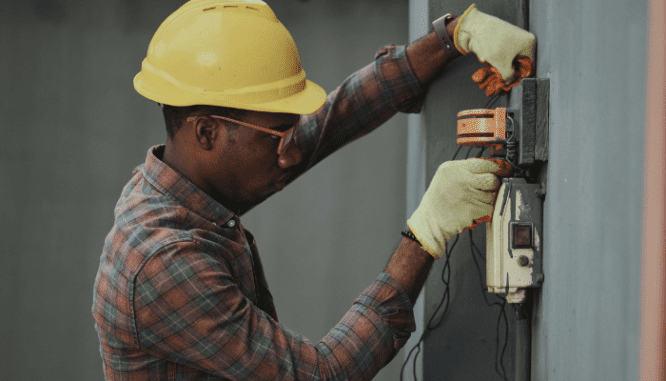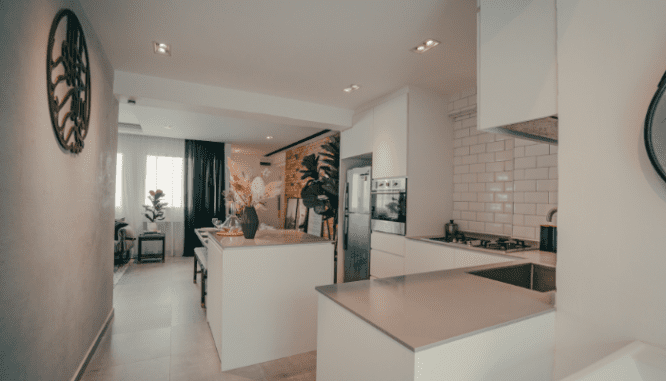New to Flipping Homes? 12 Rules Seasoned Investors Live By
- Published on
- 8 min read
-
 Melissa Rudy Contributing AuthorClose
Melissa Rudy Contributing AuthorClose Melissa Rudy Contributing Author
Melissa Rudy Contributing AuthorMelissa Rudy is a seasoned digital journalist with 15 years of experience writing web copy, blog posts and articles for a broad range of companies. When she can’t buy or sell homes, she settles for the next-best thing: researching and writing about all things real estate-related.
If you’re making a go at flipping homes, the difference between landing right-side-up or upside-down lies in having the right knowledge. You probably already know some of the basics, like the 70% rule that says you should pay no more than 70% of a house’s after-repair value (ARV). And there are the obvious tips, like running comps and sticking to a budget.
But there are many other less widely known nuggets of wisdom that only come from direct experience. Sure, you’ll pick up valuable lessons with each flip you complete — but why wait? We picked the brains of several seasoned property investors to get actionable and specific advice that will help you avoid some of the most expensive mistakes. With their guidance, you can embark on a more successful and profitable flipping career.

1. Start by buying one property, close to where you live
Once you start rehabbing a fixer-upper, it can quickly become a home away from home (whether you like it or not). It will save considerable time and hassle if you choose a property that’s relatively close to where you live.
“In the beginning when you’re starting out, you’re going to be actively involved in the day-to-day operations, and going back and forth between your home and the site multiple times a day, at least,” says Jennie Berger, co-owner of Property People, which rehabs distressed houses in Chicago for resale. “The last thing you want is to be running around town — or on the highway for miles and miles and hours each day — to get to your jobsite. Having a project close to home (say, within a 30-minute drive or so) will make your life a whole lot easier.”
2. Learn how to generate a deal on your own
Every real estate buyer is looking to get the next killer deal. Don’t expect that someone will hand over a deal and let you make all the money on it. James Fitzgibbon, owner of Ledge Real Estate Solutions and a Certified Commercial Investment Manager (CCIM), has been flipping properties in Windermere, Florida since 2002. He found that the key to succeeding as a real estate investor was to start finding the deals on his own rather than getting leads from a wholesaler.
“If you can master a method for finding off-market deals, it will be your golden goose,” says Fitzgibbon. “Forget about trying to find deals on the MLS or online auctions — there is too much competition there. Get on BiggerPockets and learn about the various methods you can use to get a deal and start implementing them. If one works for you in your market, double down on it and grow your business.”
When Fitzgibbon first got into the business, the internet was still young, and it wasn’t easy to determine the ARV of the first house he was flipping, so he trusted a wholesaler’s opinion of the value. He ended up over-improving the house and trying to sell at the wholesaler’s recommended price. In the end, he broke even, but it took a long time for the house to sell, and the only person who made any money on the deal was the wholesaler.

3. Don’t give all your money to gurus
One mistake Fitzgibbon sees new investors make is spending too much money on the learning process, sinking thousands of dollars into “guru courses” until they have none left over to actually purchase a house. Instead, he recommends joining your local real estate investor club to learn the essentials and network with people in the industry. “If you run into a deal that you aren’t comfortable tackling, you may be able to partner with a more experienced investor to get the deal done,” he says.
At these clubs, Fitzgibbon says to use caution with the guest speakers, as they are usually trying to sell learning packages. “Usually these are reasonably priced and you can get some good information from them. Just don’t get so enthusiastic that you drop $6,000 on their boot camp and don’t have any money left to buy a house,” he says. There are also online resources where you can gain access to everything you need to know at a very reasonable price.
4. Know your numbers to make the right offer
When you’ve found a house you want to buy and flip, the first step is to make a fair offer that will allow you to complete the renovations within your budget. Easier said than done, right? Fitzgibbon shares the plan he uses for coming up with offer amounts for his flips:
Step 1: Determine the approximate after-repair value (ARV)
Once you’ve found a house, you need to determine what you will sell it for once it is fixed up to the best of your ability. You’ll want to embark on your own DIY comparative market analysis to get a read on your market and the selling price of flipped homes that are similar in condition, age, size, construction, and style.
Millionacres brand Fool.com, for example, recommends rounding up at least four properties near your potential flip that were renovated and sold in the past 90 days. This should give you a solid idea of what you’d be able to sell the property for in its finished state.
Step 2: Calculate the cost of repairs
Once you have the ARV, you’ll need to estimate how much the repairs will set you back. This can seem like a giant question mark when doing your first flip. “You need to take the time to learn what it takes to renovate a house,” says Fitzgibbon. “I highly recommend Jay Scott’s The Book on Estimating Rehab Costs: The Investor’s Guide to Defining Your Renovation Plan, Building Your Budget, and Knowing Exactly How Much It All Costs.’”
On average, Fitzibbon estimates that a whole-property renovation costs about $59,500. He put together a list of the average project expenses in his central Florida town:
| Project | Average Cost |
| Whole House Renovation | $59,500 |
| Roof Replacement | $8,100 |
| New Kitchen | $20,474 |
| New Master Bathroom | $18,000 |
| New Guest Bathroom | $10,663 |
| New Whole-House A/C System | $4,925 |
| New Flooring | $16,300 |
| Paint Exterior of House | $4,863 |
| Paint Interior of House | $6,167 |
| Remodel Swimming Pool | $8,429 |
Step 3: Do the math
For new investors, Fitzgibbon suggests using a 30% margin. This will allow you some wiggle room in case you have any unexpected expenses, or if the market value starts to go down while renovating the house. Below is an example he used for a typical house in his town with a modest renovation budget:
- After repair value: $300,000
- Less 30% margin: $90,000
- Less cost of repairs: $40,000
- Offer amount: $170,000
5. Don’t forget to factor in holding costs
Many first-time flippers make the mistake of getting tunnel vision with purchasing and renovation costs. You also need to consider holding costs, which are the expenses incurred for as long as the flipper owns the property (an average of 181 days as of the fourth quarter of 2020, according to stats from Attom Data Solutions):
- Interest paid if you secured a loan to buy the property
- “Opportunity cost,” which is the amount of money your funds could be earning if invested in a different property
- Property insurance
- Property taxes (check your local county assessor’s website)
- Utilities
- HOA fees, if applicable
Lou Gimbutis, owner of Property Solutions, LLC in North Carolina, has been buying and selling houses full-time since 2004. He recommends estimating how long the rehab will take, and then doubling that expected time frame so you can over-hedge your budget for holding costs.

6. Never skip the inspection
No matter how low the price or how good a property looks at first glance, seasoned investors stress the importance of getting a professional inspection before closing on a fixer-upper.
Kurt Buehler, a real estate agent in Texas, has been flipping homes for 35 years, and flipped nine properties just last year. When inspecting a potential flip, he’s most focused on the roof, the foundation, and the HVAC, as those are the priciest issues to address. When he knows about those issues ahead of time, he can figure them into his offer price and rehab budget.
7. Line up (and vet) your contractors
HGTV might make all of those DIY improvements look easy, but if you get in over your head, you could end up having to hire a professional to fix a project gone wrong.
One of Buehler’s top flipping tips is to have a list of trustworthy, skilled contractors at the ready. He uses contractors for labor only, and buys his own materials to avoid paying the extra profit margin.
And to avoid expensive mishaps, do your due diligence on all contractors. Berger from Property People offers these vetting tips:
- Make sure the contractor is licensed (if applicable in your area) and insured (a must!).
- Check online for reviews.
- Ask for references of people they have done work for and contact them.
- Go visit the contractor’s current project sites; observe how the crews work and interact.
Another pro tip: Consider offering a bonus to your contractor to fast-track the work. This will help you sell quicker and reduce your holding costs, driving up your profits as a result.
8. Create a rock-solid scope of work
There’s an old saying: “House flippers make plans, God laughs.” OK, so maybe we tweaked that a bit, but you get the gist. With every flip, you will encounter unforeseen incidents, and almost all of them will eat into your profits. Buehler recounts when he bought a house built in the late 1960s in Dallas that had cast-iron pipes. During the rehab, when put under pressure, the pipes burst. The repair ended up taking a $12,000 bite out of his profits.
“Try to avoid expensive work change orders by taking the time — before you swing a single hammer — to nail down exactly what you want the house to look like in the end,” says Berger. For each of her flips, she writes down her plan, line by line, room by room. She includes online pictures as references, and also links to her preferred electrical and plumbing fixtures.
“The more you can show your team what you’re envisioning — the more clear you are with what you intend to do to the house — the better your contractor will be able to manifest it in the way that you’ve envisioned,” she says.
9. Don’t overimprove
When doing your first flip, it can be tempting to take it to the next level with quartz countertops, solid hardwood floors, and top-of-the-line fixtures. But Tomas Satas, a real estate investor, professional flipper, and founder of Windy City HomeBuyer, says the biggest mistake new flippers make is having “big eyes.”
“They see a house and think of all the renovations they can make and how they’re going to transform the place into a masterpiece,” he says.
“Good flippers understand that you want to make a crappy house into a sellable house. First-time flippers see the house as a project instead of an investment. Investments require sound financial decisions, not ‘big eyes.’”
Buehler recalls a client who went in and bought high-end Bosch appliances for a property he was flipping and spent $4,000 when he could have spent $1,500. “Keep in mind that you’re not buying things for you to live with — it’s for profit,” he says. “Focus on getting the best bang for buck. Every extra dollar you spend is a dollar of profit lost.”

10. Be consistent with upgrades
Once Fitzgibbon started gaining more experience as an investor, he realized that it was easier and more profitable to make more or less the same improvements for every property. “I use the same tile, colors, cabinets, accessories, and materials on each house,” he explains. “It makes my life easier and the contractors know exactly what to do.”
As a general rule, he tries not to make significant changes to a house. He may rip out a wall to open up a kitchen, but major overhauls usually just end up increasing the cost and might not bring in that much more profit. “Try to keep your renovation budget to a minimum and remember: You’re just trying to bring the house to retail quality at a reasonable price,” notes Fitzgibbon.
11. Have a backup plan
If everything goes according to plan, you’ll buy the house, improve it just enough, and sell it to someone who will get a loan to purchase it. But what if that doesn’t work out? In the game of house flipping, expect curveballs. For instance, mortgage criteria can tighten drastically while you are rehabbing the house, so that by the time you finish, very few interested buyers can qualify for a loan to purchase it, says Gimbutus. Or maybe you were way off on estimating repairs or resale value.
“If you don’t have a ‘plan B’ at minimum — ideally ‘plans B-D ’— your dream investment can quickly become your financial nightmare,” warns Gimbutus.
Some common backup plans for flips gone wrong include:
- Refinancing the house to get your cash back and then renting it out until the market turns
- Borrowing extra money to complete the additional rehab and take a loss
- Moving into the property yourself
12. Sync with an investor-savvy real estate agent
While it’s not a hard-and-fast requirement, partnering with a real estate agent will help ensure a smooth and successful flip, especially for someone who’s new to the process. An investment-savvy real estate agent can help at each stage of the process:
- Finding properties to buy: An experienced agent will have a better understanding of your local market, and can get advance notice of desirable properties for you to purchase.
- Rehabbing: An agent can provide recommendations for what to improve and can share contact info for contractors.
- Selling: When it comes time to sell, your agent can set the appropriate listing price and tap into a network of qualified buyers.
You may not be an experienced flipper, but you also aren’t the first person to ever successfully turn a house for a profit. Let the advice of the experts guide your house-flipping plans with confidence. When in doubt: budget for unexpected delays and costs, work with contractors you trust, and never “wing it.” When it comes to flipping, the detail-oriented planners will be the ones who make buyers happy and end up with money in the bank.
Header Image Source: (zlikovec / Shutterstock)
